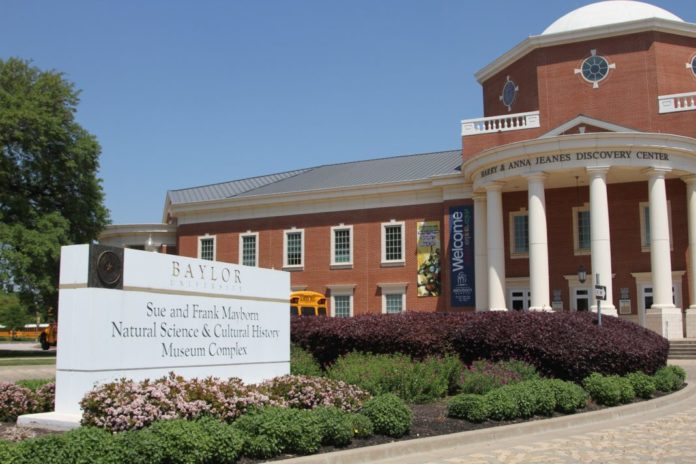
By Sarah Pinkerton | Staff Writer
Creative approaches to the once normal parts of our lives have become more and more common. The Mayborn Museum is no exception to this and has found a way to bring their museum to the living rooms of many families through an initiative called “Mayborn At Home.” Launched last week, this section of the Mayborn website allows families to explore the museum in their home during the days of social distancing with different options for exhibits and activities.
Currently, there are seven virtual visit options including a Mammoth tour, Humpback Whale skull facts and a Village Garden tour.
There are also nine activities available such as a flower dissection, a log house and a habitat at home that families can participate in.
A new live program will also be launching this week called “Meet the Mayborn” and has already been sent out to museum members for testing.
Emily Clark, museum engagement manager, said a lot of people were seeking connection with the familiar faces at the museum.
“We’re hoping to be able to try some new things, that are new to us, but also help us to really make a connection with the community and be able to bring that informal science and fun stuff that we do into their home,” Clark said.
The museum is testing out platforms such as Zoom and Facebook Live for “Meet the Mayborn.” When the pre-registration was sent out for the first Zoom call, they quickly realized they may need to set up a participation quota.
“That excites us because it shows us that people want this, and it helps us know that we should be trying more of these things,” Clark said.
Rebecca Nall, assistant director of exhibits, communications and visitor services, said they have seen positive feedback from the proposition for interactive opportunities.
“Someone recently renewed their membership during our closure and we got a note on their membership form that said ‘Thank you so much for the online videos and programs that you’re providing,’” Nall said. “To me, that really meant we’re working hard on doing the right thing.”
In the meantime, the education team, as well as the marketing and the exhibit development manager, are working on making videos from their own homes.
“It’s fun to be able to share that with people and to say ‘We’re at our homes too and here’s my kids playing with this certain activity,’” Clark said. “I think that’s building a sense of community that a lot of people are seeking right now even though we can’t be with one another in person.”
Next week, a video tutorial on a water xylophone, filmed by a graduate student in her backyard, will be released.
Nall also said she encouraged her own daughter to join in on an activity and film a video as well, and the staff getting involved adds a personal touch.
“We coined the term that she’s part of our research and development team,” Nall said. “So more staff might be getting together with their children to do videos and this is how we can get the rest of the museum staff involved.”
They are also looking into ways to creatively share the research from “Portal to the Public,” a program that that trains Baylor researchers and scientists on ways to share their studies.
“We’ve even had a couple of them reach out and say, ‘Hey, we want to do videos and content too,’” Clark said. “So [we are] hoping to build that a little bit too, so we can connect our partners as a university with the community as well, because that’s something that we do when we’re open.”
Melissa Mullins, the public outreach coordinator for the Center of Reservoir and Aquatic Systems Research at Baylor, even filmed a tour of her backyard for a new exhibit at the museum called Backyard Ecology. She also talks about science projects that individuals can participate in from home.
“This does continue to be a rapidly evolving situation,” Nall said. “It’s been very interesting in the museum field across the country, but there are lots of wonderful examples of museums rising to this challenge and continuing to try to provide the services that we normally do with face to face interactions and experiences.”





